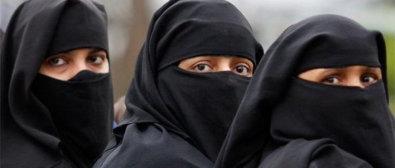US troop boost and end of US military mission US President Barack Obama arrived at the White House vowing to refocus attention and resources on Afghanistan's failing military effort. On February 17, 2009, Obama authorized the deployment of an extra 17,000 US soldiers, in addition to the 36,000 US troops and 32,000 NATO military personnel cur‐ rently stationed there. Three months later, Obama took the unusual action of transferring a commanding general from a theater of war, appointing Gen. Stanley McChrystal in place of Gen. David McKiernan. While McKiernan was re‐ shaping US policy in Afghanistan, Obama and other top officials realized that a more dramatic shift was required. McChrystal was called in to conduct a new plan based after the surge approach in Iraq, in which US forces would focus on protecting civilians from insurgents rather than just killing huge numbers of terrorists. The plan also included attempts to con‐ vince enemy fighters to desert, with the goal of even‐ tually fostering reconciliation between the Karzai ad‐ ministration and Taliban leaders. Soon after taking charge, McChrystal realized he didn't have enough troops to carry out the new pol‐ icy, and in September 2009, he expressed his wor‐ ries in a secret memo that was later leaked to the press. McChrystal projected that if there was no sub‐ stantial military increase, the war would be lost in a year. Following an extensive Afghan policy assessment, the president made a speech at the United States Military Academy at West Point on December 1st, announcing a substantial escalation in the war effort, with 30,000 extra troops being sent to Afghanistan by the summer of 2010. The new approach resulted in a rise in US combat casualties; specifically, during the first three months of 2010, US deaths were about double what they had been during the same period in 2009. The increase in US soldiers was matched by a major increase in US drone attacks in Pakistan, including one that killed Pakistani Taliban commander Baitul‐ lah Mehsud. However, the CIA paid a price in late December 2009 when an al-Qaeda double agent detonated a suicide bomb at the Bagram air base in the eastern province of Khost, killing seven CIA em‐ ployees.
12
The surge began in early 2010 with an attack on the insurgent-held town of Marja in the southern prov‐ ince of Helmand. Even though McChrystal planned a more ambitious attack in Kandahar, US Marines secured a relatively fast success. On March 28, Obama made his first visit to Afghanistan as presi‐ dent, telling Karzai that he needed to clean up cor‐ ruption in his administration. Karzai was re-elected to a second five-year term in an August 2009 elec‐ tion marred by significant claims of fraud. In his inau‐ guration address, Karzai pledged to root out corrup‐ tion in his government, but there were few evidence that he had succeeded in the short term. Meanwhile, Karzai declared that he would try to reconcile with the Taliban; he repeatedly invited Taliban leader Mullah Omar to meet with him, but the Taliban leader refused. Under increasing US pressure, Karzai struck out in April 2010, threatening to join the Tal‐ iban if the international world did not cease interfer‐ ing in Afghan affairs. Concerned over the state‐ ments, the White House attempted to withdraw Karzai's offer to meet with Obama in Washington, D.C., but the visit went through as planned, with Karzai and Obama at least publicly attempting to heal their relationship. Pakistan volunteered to facilitate Afghan peace ne‐ gotiations, but its eventual stance toward the Taliban remained a source of contention. Many US officials viewed Pakistan's arrest of the Afghan Taliban's sec‐ ond-in-command, Mullah Abdul Ghani Baradar, in February 2010 as a sign of Pakistan's determination to collaborate with the US and Afghan governments to reduce the group's power. Others, like former se‐ nior UN official in Kabul Kai Eide, claimed Baradar was a major Taliban proponent of reconciliation and that his detention was meant to undermine efforts to end the war by a diplomatic, rather than a military, settlement.
The military command structure in Afghanistan was abruptly changed again in June 2010, when Obama replaced McChrystal with Gen. David Petraeus after McChrystal and some of his aides made disparaging remarks about Obama and other top administration officials, including Vice President Joe Biden, Na‐ tional Security Advisor James L. Jones, and special representative to Afghanistan. The remarks high‐ lighted simmering tensions between US military commanders in Afghanistan and certain civilian au‐ thorities in the Obama administration. Obama ex‐ plained the shift in leadership by saying, "I encour‐ age discussion among my staff, but I will not allow division." Despite the shift, Obama pledged that the United States' policy in Afghanistan would not alter. Petraeus, widely regarded as the primary creator of counterinsurgency theory in the United States mili‐ tary, was anticipated to maintain McChrystal's em‐ phasis on protecting the Afghan people from mili‐ tants, establishing Afghan government institutions, and limiting civilian deaths. Shortly after McChrystal's resignation, the whistle‐ blowing journalistic group Wikileaks published a col‐ lection of confidential documents pertaining to the Afghanistan War online and prereleased them to nu‐ merous newspapers, including The New York Times, Der Spiegel, and The Guardian. The information was mostly raw intelligence acquired between 2004 and 2009, and Wikileaks nicknamed it the "Afghan War Diary." It revealed previously unreported civilian deaths, that a US special forces unit was tasked with capturing or killing insurgent leaders on a list, that the Taliban had used heat-seeking missiles against aircraft, and that the Pakistani intelligence service had been working with Taliban forces despite sub‐ stantial US aid to Pakistan for its assassination. The US government denounced the leak as a security vi‐ olation, but claimed that the content of the release coincided with previous existing intelligence and did not contain any new information.
Burhanuddin Rabbani, a former Afghan president and major actor in peace talks, was murdered by a suicide bomber in September, putting an end to the long-running conflict. In early 2012, a number of episodes heightened re‐ lations between the US and the Afghan government and sparked popular outcry. A video depicting US Marines peeing on deceased Afghans surfaced in the media in mid-January, prompting apologies from US officials. Several weeks later, Afghans rioted and demonstrated in response to allegations that US sol‐ diers had burned copies of the Quran at a military installation. Then, on March 11, a US soldier al‐ legedly stormed into numerous homes in Panjwai and shot dead 17 Afghans, mostly women and chil‐ dren. The act sparked huge protests and drew harsh criticism from Karzai. Days later, the Taliban backed down from discussions with the US and the Afghan government. NATO's attempts to train and equip the Afghan army and police were hindered later that year by an up‐ surge in assaults in which Afghan troops and police turned their guns against NATO personnel. These assaults compelled NATO soldiers to implement more stringent screening measures and to stop training for specific units.
In 2011, developments with several of the war's ma‐ jor objectives—apprehending top al-Qaeda leaders and dealing with the Taliban—were front and center. Bin Laden was killed by US forces on May 2, 2011, over ten years after escaping arrest at Tora Bora in Afghanistan, when US intelligence discovered him hiding in a fortified complex in Abbottabad, Pakistan. The assault, carried out by a small crew that arrived at the complex via helicopter, resulted in a shootout in which bin Laden was killed. The following month, US Secretary of Defense Robert Gates revealed for the first time that the US administration was having reconciliation discussions with the Taliban, but he cautioned that attempts to end the conflict were still in the early stages. Then, on June 22, Obama or‐ dered an expedited departure of US soldiers from Afghanistan, claiming that the US had mostly achieved its objectives by disrupting al-Qaeda activ‐ ities and killing many of its leaders. The plan aimed for a 30,000-strong reduction in US soldiers in Afghanistan within a year, with a full departure of combat forces by the end of 2014. Within hours after Obama's statement, French President Nicolas Sarkozy said that France will begin withdrawing its 4,000 troops from Afghanistan.
13






